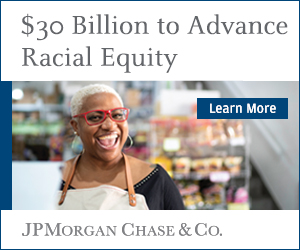Finances FYI Presented by JPMorgan Chase
Over the past decade, the financial landscape has undergone significant shifts marked by economic uncertainties, technological advancements, and global events shaping the investment world. Amidst these changes, specific resilient investment strategies have provided investors with fruitful returns. These proven investment strategies of the last decade are backed by historical performance and adaptability to a dynamic market.
What is an Investment Strategy?
An investment strategy is a systematic and well-thought-out plan that guides informed decisions about allocating capital to achieve specific financial goals. It involves assessing risk tolerance, time horizon, and financial objectives to create a diversified approach that may include stocks, bonds, real estate, or other investment vehicles.
A sound investment strategy typically considers market conditions, economic trends, and individual circumstances to optimize the balance between potential returns and risk mitigation. It is a roadmap for making investment decisions aligned with long-term financial objectives.
Proven Investment Strategies of the Last Decade
Diversification
The age-old adage of not putting all your eggs in one basket remains as relevant as ever. Diversification involves spreading investments across different types to reduce risk and enhance overall portfolio stability. The last decade reinforced the importance of a balanced portfolio, with global events impacting various sectors differently. A diversified portfolio helps cushion against the volatility of individual assets, providing a more stable overall return.
Allocating capital into different asset classes, industries, geographic regions, and investment types creates a balanced portfolio that can weather various market conditions. Successful investors often view diversification as a cornerstone of their strategy, providing a foundation for building and preserving wealth over time.
Passive Investing
The rise of passive investing has been a defining trend of the last decade, with exchange-traded funds (ETFs) and index funds gaining immense popularity. The passive investing strategy mitigates emotional biases, such as fear or greed, that can lead to poor investment decisions. By design, passive investors typically buy and hold a diversified portfolio of assets, avoiding the emotional rollercoaster associated with frequent trading and impulsive decisions based on short-term market fluctuations.
Morningstar Active/Passive Barometer reported that “of the nearly 3,000 active funds included in our analysis, only 43% survived and outperformed their average passive peer in 2022.” Passive strategies provide investors with a reliable and consistent way to participate in overall market growth. Passive strategies also typically result in lower portfolio turnover, leading to reduced capital gains distributions and, consequently, lower tax implications for investors.

Economic Trends
Understanding and capitalizing on macroeconomic trends has been a successful strategy for investors in the past decade. Understanding broader economic conditions can provide insights into which sectors and industries are poised for growth or facing challenges.
However, trying to time the market based on economic trends can be challenging, and interpreting economic data requires expertise. Markets often react in advance to anticipated trends, and attempting to enter or exit positions at the perfect moment can lead to missed opportunities or losses.
Some of the most recent economic trends include:
- Technology and Innovation. Investors who embraced the technological revolution of the last decade reaped significant rewards. Many companies at the forefront of innovation, particularly in tech, biotech, and renewable energy sectors, have demonstrated strong growth and performance.
- Infrastructure Investments. These investments have demonstrated resilience and growth potential, particularly in renewable energy, healthcare, and telecommunications sectors. As governments worldwide prioritize sustainable development, investments aligned with these goals have flourished.
- Global Investing. The interconnectedness of the global economy has made international diversification a key component of successful investment strategies. While geopolitical events and currency fluctuations pose challenges, exposure to diverse markets provides growth opportunities. Investors who ventured beyond domestic markets have found new avenues for returns and reduced risk through global diversification.
Environmental, Social, and Governance (ESG) Investing
In the last decade, we have witnessed a significant shift towards sustainable and responsible investing. ESG investment strategies, which assess a company’s environmental, social, and governance practices, have become integral to investment decisions. The development of global standards, such as the Global Reporting Initiative (GRI) and Sustainability Accounting Standards Board (SASB), allows investors to assess and compare companies based on their ESG performance.
Companies with strong ESG profiles have contributed to positive social and environmental impact and have demonstrated financial resilience and long-term viability. They are often considered more resilient and better positioned for long-term success. The demand for ESG investments represents a paradigm shift in how investors approach their portfolios, integrating ethical considerations alongside traditional financial metrics.
The last decade has been a rollercoaster ride for investors, marked by unprecedented challenges and opportunities. These proven strategies will continue to serve as valuable guides for investors navigating the ever-evolving financial landscape. Staying informed, agile, and mindful of both risks and opportunities remains the cornerstone of successful investing in the years to come.
Finances FYI is presented by JPMorgan Chase. JPMorgan Chase is making a $30 billion commitment over the next five years to address some of the largest drivers of the racial wealth divide.
























